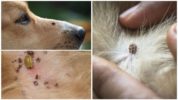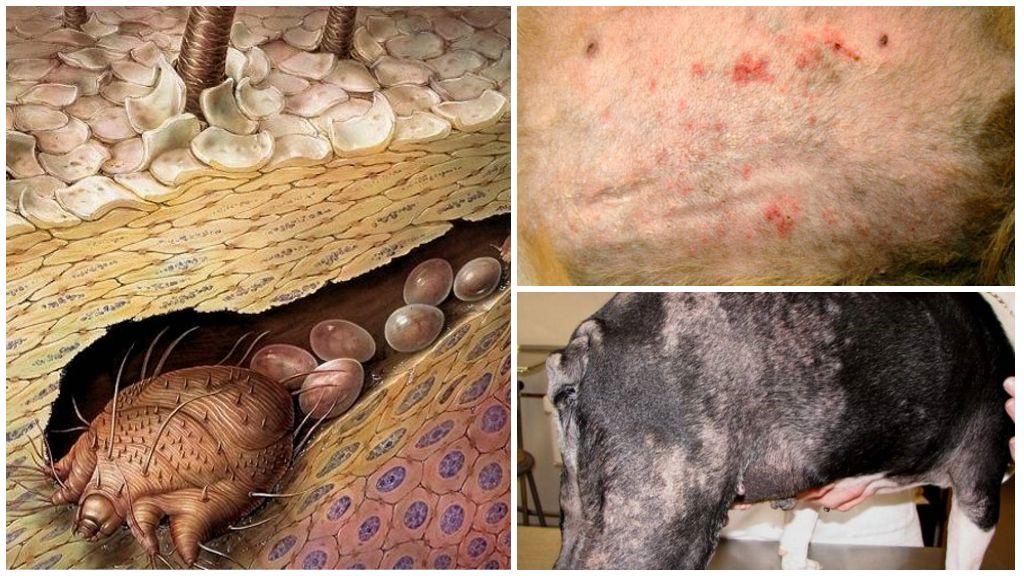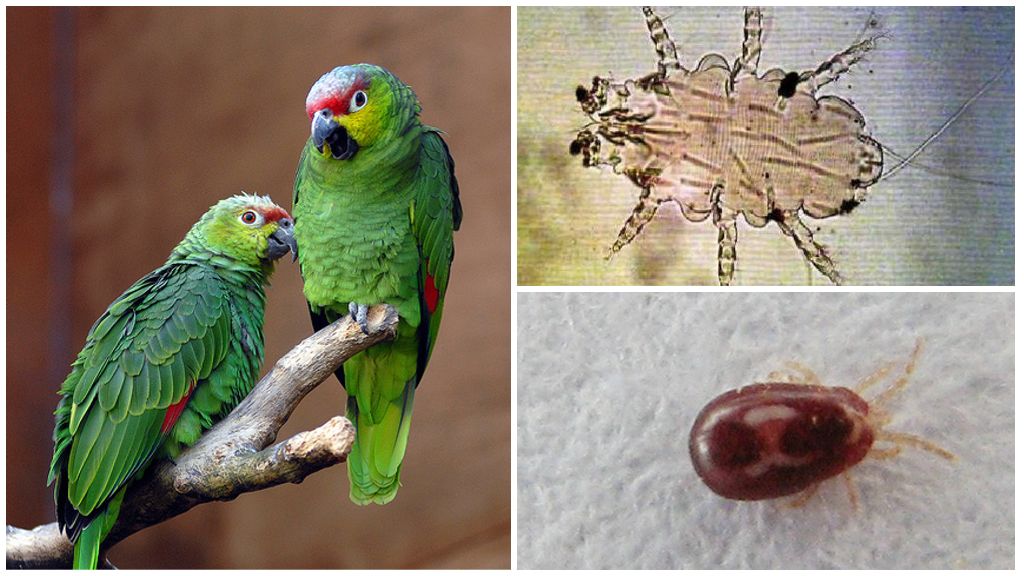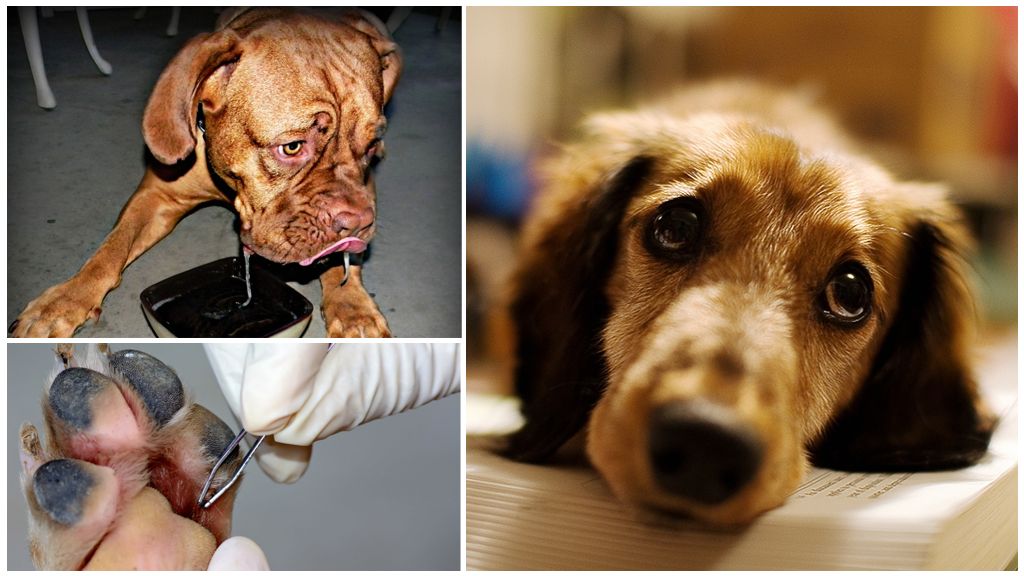- Dog tick
- Tick-borne encephalitis in dogs
- Dog Examination
Ticks belong to the blood-sucking arachnids that parasitize animals and are often carriers of infections and viruses. What symptoms indicate whether dogs suffer from tick-borne encephalitis, how to treat it and protect the pet from such a threat to health.
Tick-borne encephalitis: its forms and methods of infection
Encephalitis or pyroplasmosis is a disease in which severe damage to the animal’s brain occurs as a result of infection and toxin-induced allergies. There are 2 forms of the disease:
- primary - develops as a separate disease caused by a virus, toxoplasma bacteria or other infectious agents;
- the secondary is a complicated form after an inflammatory disease (purulent otitis media, sepsis, head injury, etc.).
The causative agents of acute primary encephalitis can be hepatitis viruses, herpes, leptospirosis, rabies, as well as fungi and nematodes, tapeworms.
On a note!
A separate type of encephalitis disease transmitted by parasitomorphic ixodid ticks, and veterinarians call tick-borne encephalitis. This form is rarely diagnosed, but the disease is acute and fleeting. How dangerous the encephalitis tick is for dogs can be judged by statistics. Thus, mortality from acute encephalitis in pets is 98% (in the absence of timely treatment).
In addition to encephalitis, ixodid ticks can be carriers of other infections. Because of their bites dogs have borreliosis, bartonellosis, hepatozoonosis, etc. Therefore, any dog owner should know the first signs of his pet's illness in order to have time to provide first aid and save him from death.
What does an encephalitis tick look like?
If you find a tick on your dog, you need to know exactly what actions to take next. Tick-borne Encephalitis outwardly no different from other "bloodsuckers." They find it most often already in an enlarged state. And in order to be fully satisfied, the tick needs 2-10 hours.
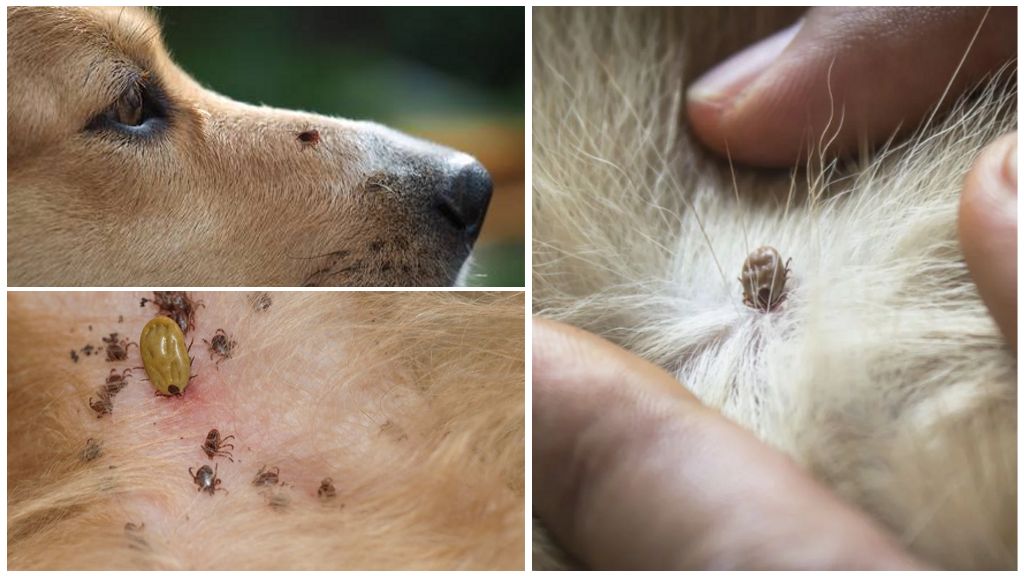
If such a parasite is found in the dog’s coat, it is necessary to try extract tick. This should be done carefully, trying not to leave his proboscis under the skin (in which there may be an infection). For this use syringe, special fixture or tweezers that need to grab the tick and gently twist it with a rotating motion from the skin. Further required sanitize a wound (alcohol, brilliant green, etc.).
Important!
The tick does not need to be thrown away. If you suspect a possible infection, it should be placed in a glass jar and taken to a laboratory in a veterinary clinic to submit for analysis and understand if he was infected with encephalitis.
Experts do not recommend using oil or kerosene to stretch the tick to clog the respiratory system, because of their action, the “bloodsucker” from fright is able to quickly shoot the contents of its stomach along with the infection.
How does infection happen?
The pyroplasmosis or tick-borne encephalitis virus in dogs gets under the skin along with the saliva that the infected tick injects. Together with him, he adds an anesthetic substance, which provides the "bloodsucker" time in order to manage to gain a foothold in the place chosen for the bite.
Having taken the amount of blood he needs, the saturated tick slowly digests the food, and then releases its “waste” into the blood of the victim in the form of a plasma infected with the virus. Further, the virus spreads through the blood vessels, affecting important systems of the dog’s body. During the absorption of blood, the female tick usually increase in size, sometimes almost 10 times.
The period that passes after the bite of an encephalitis tick and before the first signs of the disease appear is called incubation. Its duration depends on a number of factors:
- the dog’s health and immunity;
- the number of bites;
- Pet's age, because dogs older than 4 years old are resistant to the virus, but after 8 years of age their immunity to the virus decreases;
- if the dog already had infection with pyroplasmosis, then a temporary immunity is developed for its action;
- when done pyroplasmosis vaccine resistance to the action of the virus increases: the disease passes in a milder form, and in the acute stage it can be controlled and treated.
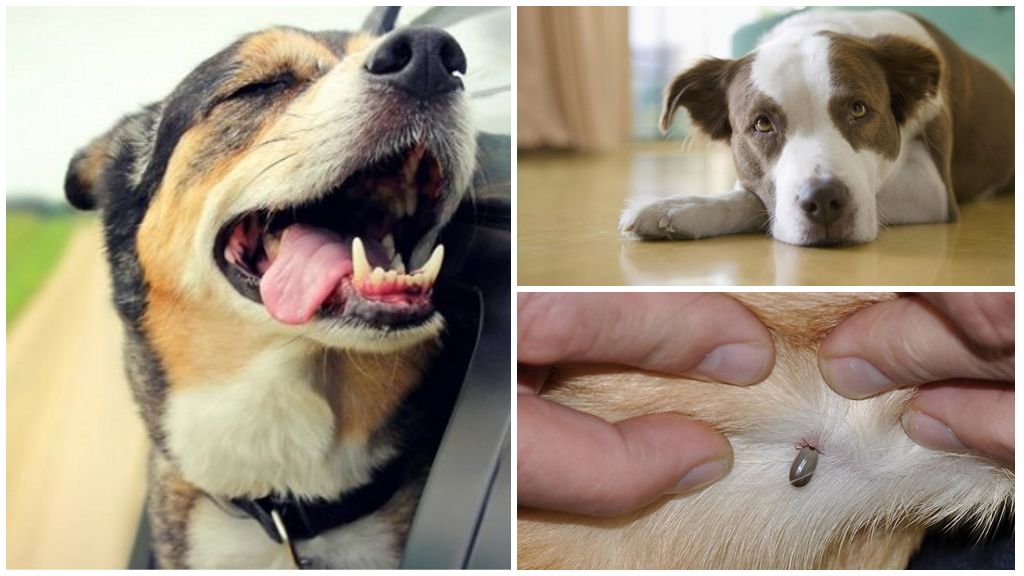
On a note!
According to studies, the incubation period of the disease can last from 20 hours to 2 weeks.
The possible consequences of a tick bite are as follows:
- there is an active multiplication of the virus in the cells and damage to red blood cells;
- dead cells and their fragments are excreted through the kidneys of the pet, which leads to intoxication of the body, renal failure is possible;
- negative effects on the liver and nervous system;
- cerebral edema occurs due to inflammation of the tissues - this manifests itself in convulsions and may result in the death of the animal.
Symptoms of Encephalitis in Dogs
A dangerous virus, entering the dog’s blood, acts detrimental to red blood cells. When it penetrates with blood into the vessels of the brain, there is a violation of coordination of movement in the pet and general intoxication of the body.
Symptoms of an encephalitis tick in dogs develop quite quickly, within a few hours:
- deterioration in general condition, increase in body temperature to + 40-41 ° C, apathy and depression can occur for 1-2 days, and then recede, which is why many owners take these signs for a slight malaise;
- complete refusal of food;
- staggering gait - hind legs weaken, possible loss of balance;
- urine changes color to brown-brown, and then black-green - the clearest and most defining sign of how encephalitis manifests itself in a sick pet;
- diarrhea (upset stomach) appears with bloody discharge, vomiting;
- sclera of the eyes turn pale and turn yellow.
Therefore, observing such signs of encephalitis after a tick bite in a dog, any owner should seek help from specialists as soon as possible to begin treatment.
What to do when a disease is detected
Diagnosis is made by the doctor based on the results of the examination of the dog, however, an accurate diagnosis can only be established after delivery tests for pyroplasmosis to the lab.
To do this, do the following examinations:
- blood and urine tests;
- Ultrasound or x-ray;
- analysis of cerebrospinal cerebrospinal fluid for bacteria;
- computed tomogram.
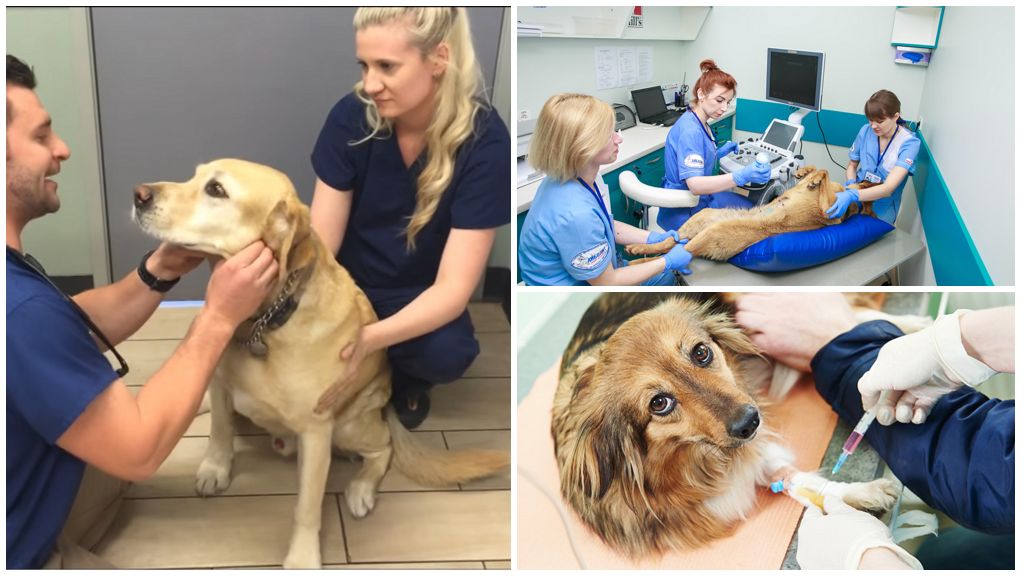
Important!
Treatment of encephalitis in dogs with confirmation of infection in the tick should be started immediately, even before the first symptoms appear, and not wait for what will happen to the pet in the coming hours.
When applying encephalitis therapy at an early stage, recovery in the dog is observed after a few days, and there are no complications. In a neglected state, only 75% of the animals can be cured, and the duration of treatment is 1-3 weeks.
The composition of complex therapy after a bite of an encephalitis tick includes the following medications:
- injections of drugs used in the fight against blood parasitic diseases for the treatment of pyroplasmidoses: Azitin-Vet, Berenil, Veriben, Piro-stop, Pirosan, etc.
- antiviral immunoglobulins;
- medicines to reduce the negative effects of toxins on the body and restore liver function (hepatoprotectors);
- if necessary, antibacterial or antifungal drugs are prescribed;
- glucocorticosteroid hormones;
- vitamin therapy and a strict diet.
Usually, encephalitis is treated in a veterinary clinic under the supervision of specialists. After complex therapy, the animal must go through a recovery period.
Encephalitis Prevention
So that the situation when the dog is bitten by an encephalitis tick does not occur and does not cause a serious illness in a pet, it is necessary to protect the animal in advance from a possible attack of "bloodsuckers".
Measures for the prevention of encephalitis infection in animals:
- in the summer, especially in May-June, when the number of ticks is maximum, it is necessary to carry out mandatory processing of the animal using special preparations: sprays, pills, drops from ticks, etc .;
- put on mite collars a dog whose smell repels parasites;
- get vaccinated to develop immunity in the dog;
- after each walk in the park or in the forest, inspect the animal's coat for sucking parasites.
Regular prevention of tick attacks will help to avoid infection of the dog with viral encephalitis, and timely treatment at the first sign of a bite will save the animal from death.
